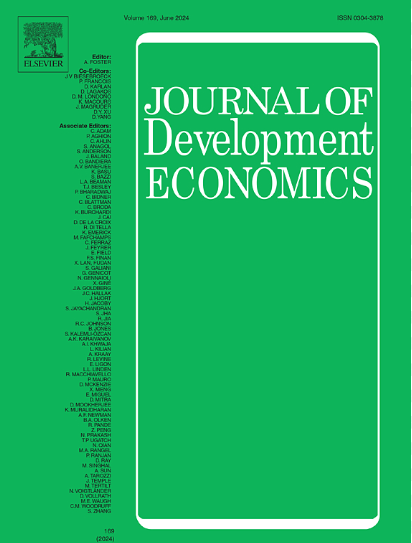数字连接与企业参与国外市场:基于出口商的双边分析
IF 4.6
1区 经济学
Q1 ECONOMICS
引用次数: 0
摘要
本文研究了电信海底电缆(SMC)的部署所导致的双边数字连接如何影响企业参与出口市场。基于异质性企业模型,并使用1997-2014年期间48个国家双边贸易数据的不平衡面板,我们发现两国之间的SMC连接与发达国家双边出口商数量的增加有关,同时与发展中国家双边出口商数量的减少有关。双边连通性与企业参与出口市场之间的这种负相关关系在最贫穷的发展中地区似乎更为强烈,那里的企业数字吸收能力较低。北非和撒哈拉以南非洲。因此,中小企业的部署刺激了世界连通性的增长,对企业的出口决策产生了异质影响,促使高收入国家的更多企业进入出口市场,而低收入国家的一些现有出口商退出出口市场。本文章由计算机程序翻译,如有差异,请以英文原文为准。
Digital connectivity and firm participation in foreign markets: An exporter-based bilateral analysis
This paper studies how the bilateral digital connectivity resulting from the deployment of telecommunications SubMarine Cable (SMC) affects firm participation in export markets. Based on a heterogeneous firm model and using an unbalanced panel of bilateral trade data across 48 countries during the period 1997–2014, we find that an SMC connection between two countries is associated with an increase in the number of bilateral exporters in developed countries, together with a reduction in the number of bilateral exporters in developing countries. This negative association between bilateral connectivity and firm participation in export markets appears to be stronger in the poorest developing areas, where firms have lower digital absorptive capacity: Middle East & North Africa and Sub-Saharan Africa. The growth in world connectivity spurred by SMCs deployment has therefore had a heterogeneous effect on firms’ decision to export, pushing more firms from high-income countries to enter export markets and some incumbent exporters from lower-income countries to exit them.
求助全文
通过发布文献求助,成功后即可免费获取论文全文。
去求助
来源期刊

Journal of Development Economics
ECONOMICS-
CiteScore
8.30
自引率
4.00%
发文量
126
审稿时长
72 days
期刊介绍:
The Journal of Development Economics publishes papers relating to all aspects of economic development - from immediate policy concerns to structural problems of underdevelopment. The emphasis is on quantitative or analytical work, which is relevant as well as intellectually stimulating.
 求助内容:
求助内容: 应助结果提醒方式:
应助结果提醒方式:


